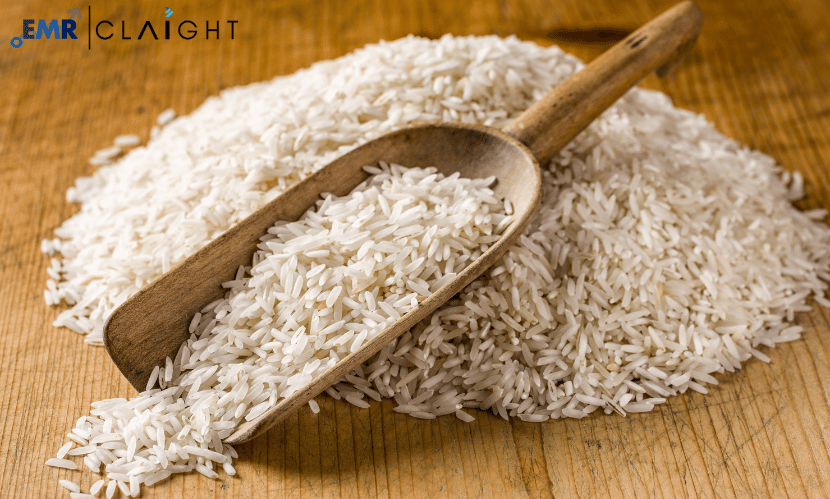According to the report by Expert Market Research (EMR), the global rice market is projected to grow at a CAGR of 3.1% between 2024 and 2032. Aided by the increasing global demand for staple food crops and the rising population, the rice market is expected to witness substantial growth by 2032.
Rice is one of the most widely consumed staple foods globally, feeding more than half of the world’s population. The ease of cultivation, versatility in various cuisines, and its nutritional value make rice an essential crop for both domestic consumption and international trade. With ongoing urbanization, rising disposable incomes, and growing food security concerns, rice continues to be a crucial part of the global food chain.
The growing global population, especially in regions like Asia, Africa, and Latin America, has fueled the demand for rice as a primary food source. In addition to being a staple food in many regions, rice is also used in various processed foods, snacks, and beverages, further diversifying its applications. Moreover, with consumers becoming more health-conscious, the demand for different varieties of rice, such as brown rice and organic rice, is on the rise due to their perceived health benefits.
Technological advancements in rice cultivation, such as high-yielding varieties, pest-resistant strains, and precision agriculture, are improving the productivity and sustainability of rice farming. These innovations, along with improved irrigation practices, are expected to bolster the supply side of the global rice market. Furthermore, the expansion of e-commerce platforms and retail chains is making rice more accessible to consumers worldwide, driving sales through both online and offline channels.
Despite these growth prospects, the rice market faces challenges such as water scarcity, environmental concerns related to intensive rice farming, and trade restrictions. However, efforts towards sustainable farming practices, including water-efficient irrigation techniques and organic rice production, are likely to mitigate these issues and present growth opportunities for market players.
Get a Free Sample Report with Table of Contents: https://www.expertmarketresearch.com/reports/rice-market/requestsample
Market Segmentation
The global rice market can be divided based on variety, distribution channel, and region.
Market Breakup by Variety
- White Rice
- Brown Rice
- Organic Rice
- Other Specialty Rice Varieties
Market Breakup by Distribution Channel
- Offline Retail (Supermarkets, Hypermarkets, Grocery Stores)
- Online Retail (E-commerce Platforms, Brand Websites)
Market Breakup by Region
- Asia Pacific
- North America
- Europe
- Latin America
- Middle East and Africa
Read Full Report with Table of Contents: https://www.expertmarketresearch.com/reports/rice-market
Drivers and Trends
One of the most significant drivers of the global rice market is the continued reliance on rice as a staple food in several populous regions, particularly in Asia-Pacific, which accounts for the largest share of global rice production and consumption. Countries such as China, India, Indonesia, and Vietnam are leading producers, meeting the dietary needs of billions. As the populations in these regions grow, the demand for rice is expected to remain steady, if not increase.
Rice consumption is also growing in other parts of the world due to dietary diversification and the growing popularity of Asian cuisines. North America and Europe have seen a rise in rice consumption as consumer preferences shift towards more versatile, gluten-free grains. Moreover, the expanding food service industry and the growing trend of packaged ready-to-eat meals have further increased the demand for rice.
In addition to consumption growth, there is an increasing demand for premium rice varieties, such as basmati rice, jasmine rice, and organic rice, as consumers become more health-conscious. Brown and organic rice, in particular, are gaining popularity due to their perceived health benefits, including higher fiber content and lower glycemic index compared to white rice.
Moreover, the advancement of precision agriculture techniques and the use of biotechnology in rice production are improving yields and making rice cultivation more sustainable. For instance, the development of genetically modified strains resistant to pests and diseases has contributed to reduced crop loss and increased efficiency, boosting the overall market.
Challenges and Opportunities
While the global rice market shows immense growth potential, several challenges must be addressed to ensure sustainable development. Water usage in rice cultivation remains a significant concern, as rice is a water-intensive crop. Regions facing water scarcity or unpredictable weather conditions due to climate change may experience reduced yields, impacting the overall supply.
Additionally, the environmental impact of rice farming, particularly methane emissions from flooded rice fields, has come under scrutiny. Sustainable rice farming practices, such as alternate wetting and drying (AWD), are being promoted to reduce water use and greenhouse gas emissions. Governments and international organizations are also emphasizing the need for climate-resilient rice varieties to mitigate the adverse effects of climate change on rice production.
Furthermore, global rice trade is influenced by geopolitical tensions and trade restrictions. Countries heavily reliant on rice imports may face challenges due to tariffs, export bans, and political instability in major exporting countries. However, the establishment of free trade agreements and improvements in transportation infrastructure are expected to facilitate smoother international trade and create growth opportunities for market participants.
Competitive Landscape
The global rice market is highly competitive, with several large and small players involved in both production and distribution. Major rice-producing countries such as China, India, Thailand, and Vietnam dominate the market, supplying rice to both domestic and international markets. These countries are home to some of the largest rice mills and exporters, ensuring a steady supply to meet global demand.
Key players in the market are increasingly investing in technological innovations to improve the quality and yield of rice. Companies are focusing on developing high-yielding hybrid varieties, expanding their geographical reach through strategic partnerships, and enhancing their distribution networks to maintain their market position.
Leading companies in the global rice market include:
- Charoen Pokphand Foods PCL
- Olam International
- Riceland Foods
- Tilda Limited
- LT Foods Limited
- KRBL Limited
- Amira Nature Foods Ltd.
- SunFoods LLC
- California Family Foods
- Mars Food
These companies are also adopting strategies such as product diversification, focusing on premium rice varieties and introducing rice-based products like rice snacks, rice flour, and rice bran oil to tap into new consumer segments.
The global rice market is poised for steady growth, driven by increasing demand for staple foods, rising global population, and advancements in rice cultivation technologies. While challenges such as environmental concerns and trade restrictions persist, the growing trend towards sustainable and premium rice varieties offers lucrative opportunities for market players. As the market continues to evolve, companies that prioritize innovation, sustainability, and consumer preferences will be best positioned to succeed in this dynamic landscape.




